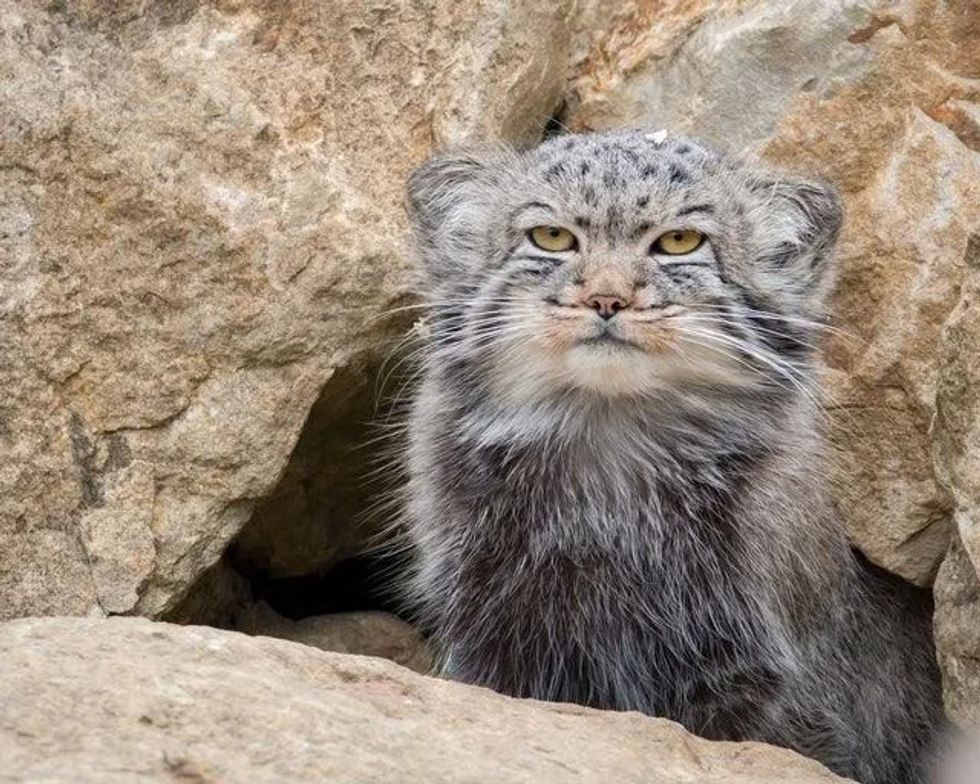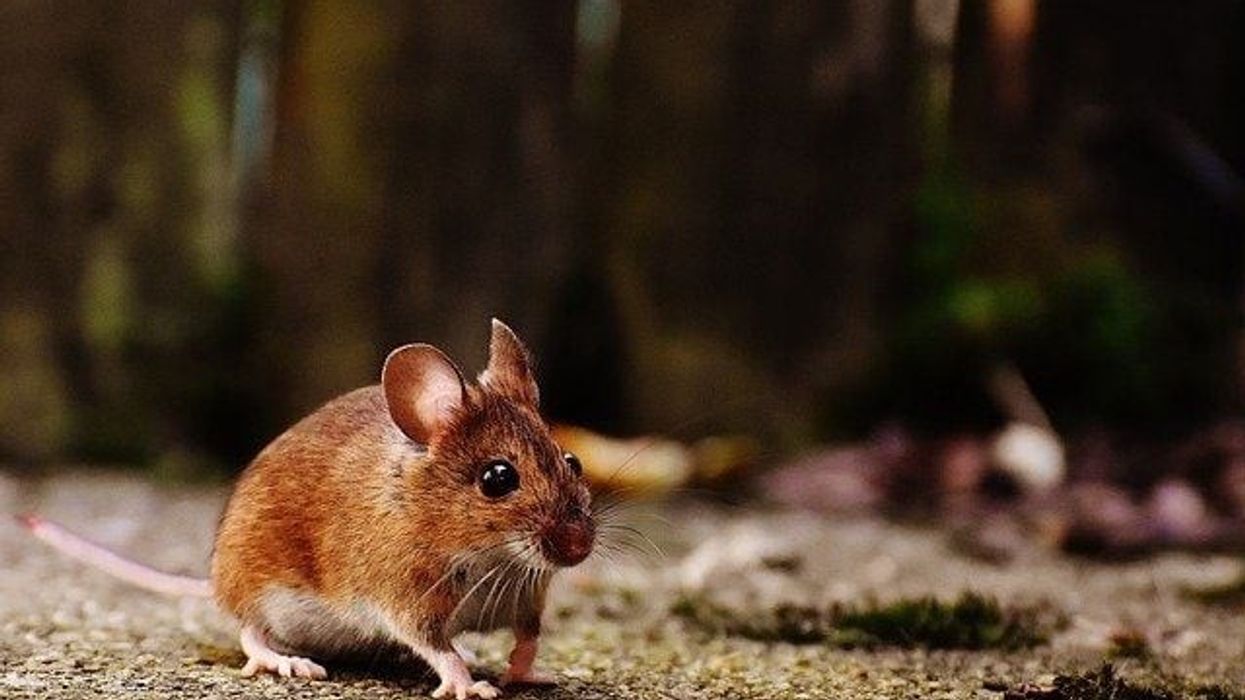Short, stocky, grumpy, and adorable, these words are enough to describe the exotic Pallas's cat. Otocolobus manul is its scientific name.
After being introduced by Peter Pallas in the 18th century, these cats have carried his name for centuries now. Another more accurate name they have is Manul.
They are solitary, aggressive, and like to avoid humans. Pallas' cats have been captured in captivity, although it is not good for them.
It's difficult to estimate how long a Pallas's cat can live in the wild, but some have survived as long as 12 years in captivity. Unlike other types of small wild cats, they tend to have round pupils, but no one is sure of the reason for that as of now.
Their dense fur coat protects them from the threats of other animal attacks as well as the harsh winters of these regions. Please read on to learn more strange facts about Pallas's cat.
If you like reading this article, please check out the Canada lynx and the leopard cat.
Pallas' Cat Interesting Facts
What type of animal is a Pallas's Cat?
As evident by the name, Pallas's cats are a type of small, wild cats that live in Asia.
What class of animal does a Pallas's Cat belong to?
Pallas's cats belong to the class of mammals. This means, that they do not lay eggs, instead give birth to live kittens. They are known for living specifically on stony steppes, and the crevices of caves.
How many Pallas's Cats are there in the world?
It is hard to say just how many Pallas's cats are there in the world, as they are not listed as a species of concern as of now. It is assumed that this mammal has a large and healthy population thriving in their natural habitat.
Where does a Pallas's Cat live?
They prefer the cold and arid Central Asian climate. They are found in the rocky steppes, and grasslands of Mongolia, Pakistan, China, Central Asiatic Russia, and a few other countries. Their silvery-gray winter coat protects them from the harsh winters of these regions
What is a Pallas's Cat's habitat?
Pallas's cats live exclusively in abandoned burrows, caves, crevices, and rocky outcrops. They are very good at hiding inside their habitat, only coming out at night, dusk, or dawn to hunt for prey.
Who do Pallas's Cats live with?
Pallas's cats are solitary and prefer to live on their own. They are also nocturnal creatures and tend to hunt during the night. They have also been known to be active during dusk or early in the morning.
How long does a Pallas' Cat live?
Pallas's cats rarely live longer than 11-12 years on average. The mortality rate is quite high among kittens.
About 68% of them do not survive long enough to move into their ranges. The adult mortality rate, on the other hand, is about 50%. Adult cats tend to die more during the winter season in Mongolia and other parts of central Asia, which occurs between October and April.
How do they reproduce?
Like all other mammals, this mammal reproduces by mating. Their breeding season generally lasts from December to March.
The average gestation period for female cats is about 75 days, after which they give birth to about three to four kittens, but some have been known to give birth to as many as eight kittens in a single clutch.
Much like most other cats, this mammal is also blind and completely vulnerable after birth. The kittens are known to molt at about two months old and can hunt on their own by the time they are four to five months old.
What is their conservation status?
Fortunately, this mammal species is listed as Near Threatened on the IUCN red list of endangered animals. However, they are assumed to have maintained a thriving, large, and healthy population in their natural habitat.
Pallas' Cat Fun Facts
What do Pallas' Cats look like?

Pallas's cats are small cats, with a stocky build, their size can be compared to a domestic cat's. They have long dense fur covering their whole body.
It is normally gray or sometimes pale reddish, with the tips coated with white, it manages to give them a frosted look. These cats also have a few narrow stripes running across their lower backs.
The long tail of the Pallas' cat is black tipped with a few black rings running across its whole length.
Their ears are also rounded, and usually buff-colored with black tips. The fur on their forehead and crown is silvery-gray and peppered with black spots.
There is a huge variation in the color of their coats, leading scientists to address them as three different subspecies. The most common one with the above-mentioned coloring is found throughout Mongolia and China, where they live in rocky burrows, while others are found in Pakistan, Tibet, Nepal, and Central Asiatic Russia.
How cute are they?
A Pallas's cat can be very cute, with its small body size, silvery-gray fur with white tips that gives it a frosted look, and short rounded ears. The appearance of these animals can come across as grumpy, which can be very adorable and cute.
How do they communicate?
Pallas's cats communicate through vocal signals and body language.
How big is a Pallas's Cat?
Pallas's cats are small in size, with a head to body length rarely growing more than 18.1-25.6 in (46-65 cm). They have a long tail which ranges from about 8-12 in (20.3-30.5 cm). Interestingly, it is about the same length as an alligator snapping turtle. How fun is that!
How fast can a Pallas's Cat move?
These cats are not known for moving very fast. They usually move in short bursts and then lie flat down on the ground while hunting for food, to avoid becoming prey themselves. As this mammal is not very fast, they need to move quite close to their prey before they can pounce and capture them.
How much does a Pallas's Cat weigh?
They are small-bodied cats and only weigh around 5.5-9.9 lb (2.5-4.5 kg).
What are their male and female names of the species?
Much like most other small types of cats, the Pallas's cat does not have gender-specific names for their male and female counterparts. The males are called male Pallas's cats and the females are known only as female Pallas's cats.
What would you call a baby Pallas's Cat?
Just like all other cats, the Pallas's cat's babies are called kittens. They are very vulnerable at birth but can grow to their adult size in just four to five months.
What do they eat?
These cats are known for exclusively inhabiting burrows and having a wide variety of prey in their diet. They eat different types of reptiles like lizards, chameleons, insects, rodents, and even carrion.
Even though they have a high population, they tend to give each other enough space to avoid food fights. They have developed a special immune system that cannot be maintained well with the diet they are provided in captivity, and can lead to serious health problems.
Are they dangerous?
This mammal is dangerous in the sense that all wild animals are dangerous. It depends on how you approach them.
As they are quite small the maximum amount of damage they can cause is similar to a feral cat. They are solitary in nature and can become aggressive if they feel threatened. So, they are not very dangerous if you approach them carefully.
Would they make a good pet?
Wild animals do not make good pets, and the Pallas's cat is no different. It is very hard to care for a Pallas's cat pet as they have evolved to live at high altitudes.
It also means that they have developed a special kind of immune system which often contradicts the diet plan that could be catered to them in places of low altitude.
Kittens bred in captivity are also known for having higher mortality rates. Pallas's cats are also extremely solitary and prefer to not come in contact with humans, this is also a reason why very little is known about them.
Did you know...
Unlike other species of small wild cats, Pallas's cats have round pupils.
The scientific name of the Pallas's cat, Otocolobus manul, actually means ugly eared.
History Of The Pallas's Cat
In 1776, German naturalist Peter Pallas introduced these cats, and at first, described them as the ancestors of the domesticated Persian cat, because of their dense coat and stocky build. Although later studies revealed that he was very wrong on that account, the cats remained associated with his name.
Where can I see a Pallas's Cat?
There are about 50 Pallas's cats in several zoos in the US, however, the Red River Zoo is the only zoo that is associated with the AZA, which has been known to be able to breed Pallas' cats successfully and consistently.
Here at Kidadl, we have carefully created lots of interesting family-friendly animal facts for everyone to discover! Learn more about some other mammals including the caracal and the snow leopard.
You can even occupy yourself at home by drawing one of our Pallas' cat coloring pages.










